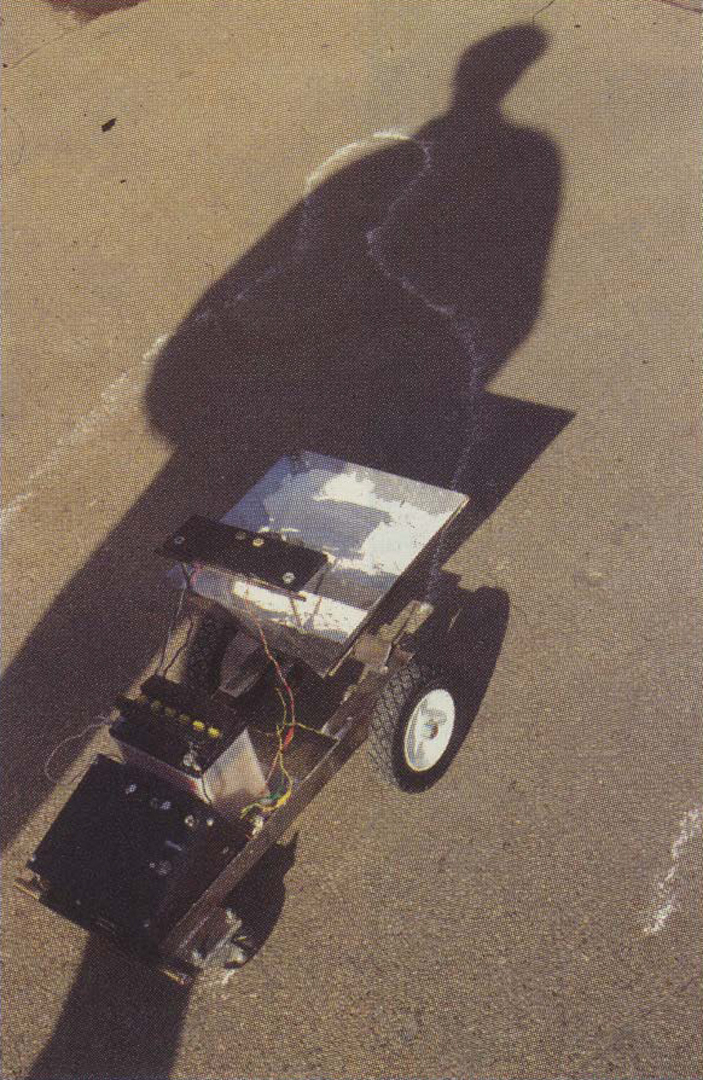Jeffrey Guhde: Solar Self Portrait
Artist(s):
Title:
- Solar Self Portrait
Exhibition:
Creation Year:
- 2004
Medium:
- C-Print
Size:
- 14 inches x 18 inches
Category:
Artist Statement:
I create machines that respond to and record physical forces within the natural environment. Specific mechanical devices are directly controlled by the movements and energies that they were designed to respond to, at a chosen site. The machines function to visually document the selected natural activity, continuously, over a period of time. The documentation, which is usually designed to be displayed in the form of a continuous line, is made to be seen entirely at once, to immediately reveal its complete history and progression to the viewer. In presenting these linear records, it is my goal that my machines achieve a relative and true representation of the specific activity and energy that they were designed to respond to. I consider that visual line to be more engaging than the device used to create it and to be more noticeable than the force of its origin. It is my hope that through this process of collecting and presenting a force’s history as a perceivable line, I can stimulate a genuine appreciation for the natural forces that created them, and the energy they possess.
Technical Information:
In Solar Self-Portrait, a micro-controller (Parallax Basic Stamp 2 ) uses a computer program t o detect the light o f the sun and control the drive motors on the stylus. The light-sensitive components are simply photo resistors, which are mounted on the very top of the stylus. When used in conjunction with .1 uf capacitors in a “resistorcapacitor
circuit,” the micro-controller collects a numerical value of
light intensity on each sensor. As the stylus moves along the ground, the contour of my shadow must stay in between the light sensors. That means that one must stay in direct sunlight, and the other must remain in my shadow. When these conditions are satisfied, both drive motors on the stylus
turn forward, allowing it to move in a straightforward path. When the stylus strays from its course, the photo resistors detect a change in lightness, and the micro-controller reverses the direction of the corresponding drive motor, to bring the stylus back on course. A 200 RPM geared motor (12 VDC) continuously turns within the chalk funnel to distribute the chalk to the ground. The drive motors are 2 RPM, 12 VDC . A remote-control circuit, independent of the micro controller, allows me to switch the stylus on and off easily
from a fixed position nearby during the initial calibration phase of the piece. The drive motors, chalk motor, and micro-controller can all be switched off independently.







